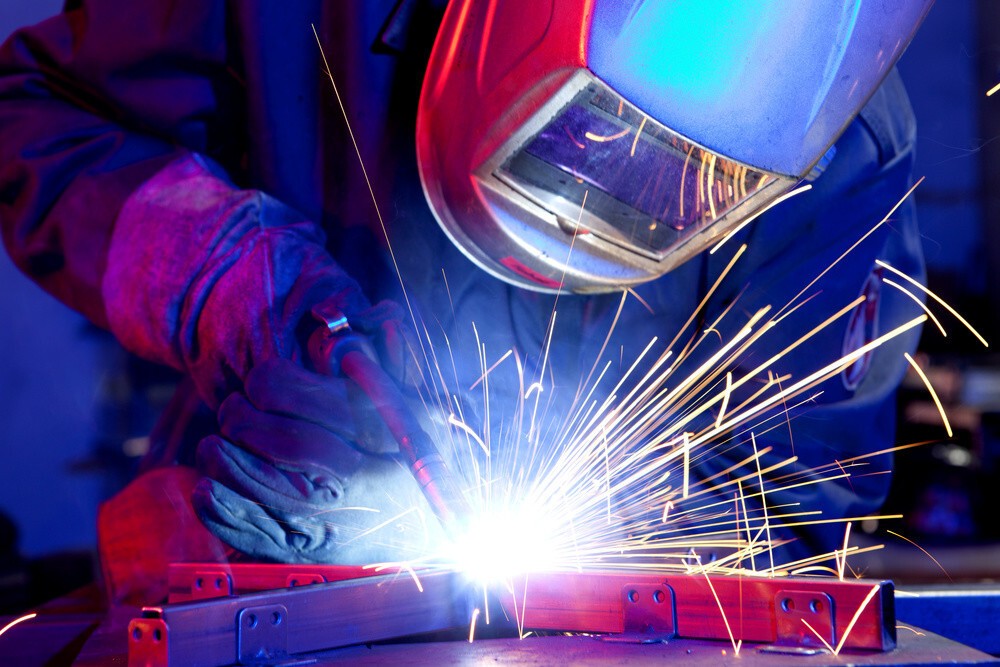Welding plays a vital role in our life; it is one of the most significant elements of several industries and is required for development.
Manufacturing and production trade heavily rely on welding, especially the fields of automation industry and construction.
The importance of welding can be realized when you see that we cannot function without welding, from making small home alliances to manufacturing airplanes.
Table of Contents
What is Welding?
Welding is a process that is used to join two or more metals together by means of heat or electricity. It is a complete physical job and involves severe risks and hazards such as electric shocks, burns, UV radiation exposure, and affecting the eyes.
By following the safety standards and protocols and wearing personal protective equipment and gears while doing the job, one can minimize the risks to a certain level.
Technical knowledge, expertise, physical strength, and a lot of practice and experience are required to be a professional or an expert in this field.
Higher the risk in the job, the more it pays. Welding is one of the highly paid, skillful, and most challenging professions in the world.

Types of Welding
Welding itself is a very vast field, and you need at least a year time to learn it properly. Based on the type of work and assignment, there are different types of welding that are used. It makes it easier for the user to have different welding types for specific purposes.
Mainly there are four common types of welding:
- MIG Welding
- TIG Welding
- Stick Welding
- Gas Welding
1. MIG Welding
Metal Inert Gas (MIG) welding is one of the most common and easiest types of welding, and beginners are recommended to start with this process.
MIG Welding, sometimes is also called as Gas Metal Arc Welding (GMAW); a thin wire is used as an electrode that heats up by the welding equipment to make it function.
The process also involves a shielding gas, which is supplied through the welding gun; the main task of this gas is to protect welding equipment and welded area from the outside environment such as oxygen, mists, and smoke.
The MIG Welding process can be automatic or semi-automatic and is capable of operating on AC and DC current and requires a constant voltage.
To perform the MIG Welding process, you mainly need a power supply, gas supply, electrode, and a welding gun.
MIG welding can further be categorized into two forms. One uses the bare wire, and the other uses the flux core.
You may apply any method according to the condition and requirement. Mig Welding is normally preferred for stainless steel, copper, and aluminum.
- Easy to learn
- High speed and quality
- versatile
- Produces less amount of slag
2. TIG Welding
Tungsten Inert Gas (TIG) Welding offers the best welding quality, but it also the most challenging technique to learn from all.
It is also referred to as Gas Tungsten Arc Welding (GTAW). It is usually used where you require precise and accurate results and maximum efficiency.
Non-consumable tungsten electrodes are being used for the TIG welding process. Long-lasting and robust weld is achieved through this process. Inert shielding gas is also used in this technique to protect the welding equipment from the surroundings.
To perform the TIG welding process, you mainly need a constant welding power supply, non-consumable electrode, and inert gas shielding supply.
- Offers excellent control to the user
- Faster
- Can weld in any position
- Top-quality welding result
- Highly efficient and effective
3. Stick Welding
Stick welding is also referred to as Shielded Metal Arc Welding (SMAW); it is also one of the simple technique and requires less equipment as compared to other techniques.
The stick welding uses the consumable electrodes coated with flux and does not require inert shielding gas; thus, this process can also be performed in an outside environment.
The stick welding process is manual and uses electric DC or AC current as the power supply to form an arc between the material and the stick. Dues to its versatility, it is widely used for revamping and maintenance tasks and applications.
To perform the shielded metal arc welding, you just need a constant current power supply, an electrode with a holder, welding cables, and ground clamps.
- Affordable
- Easy to operate
- Less sensitive
- No shielding gas is required.
4. Gas Welding
The gas welding technique is another method for joining the metals. As the name suggests, it uses gas to heat the joining parts to the point that they melt and fuse to form a bond. This form of welding is also referred to as heat-based welding.
It is one of the oldest welding techniques and is easy to learn and use. To achieve the high-temperature range, gas welding uses the mixture of oxygen and any other highly flammable gas such as acetylene and others.
Depending on the type of welding metal and its melting point, you can select the appropriate gas.
To perform gas welding, you mainly need fuel and an oxygen cylinder, a container where you can mix the gases, a welding torch, and control valves to regulate the intensity of flames.
Gas welding is versatile and is used for several applications, including the repair and fabrication industry.
- Affordable
- No electricity is required.
- Easy to perform operations
- Portable and requires less maintenance
These are the most popular types of welding today; however, as the world is moving towards technology and advancement, welding methods and techniques are also upgrading with time.
The latest development in the welding industry is laser beam welding, which uses laser technology to join the metals. Yet, you need to have sufficient knowledge, expertise, and experience in other welding techniques to master the advanced methods.
Most importantly, as you know that welding comes with severe health risks; no matter what type of welding process you are proceeding with, you need to follow the safety instructions and guidelines at all times.
Especial welding safety gears are recommended for use while performing the welding operations. If you follow the procedure appropriately, you can get a perfect weld in no time.
